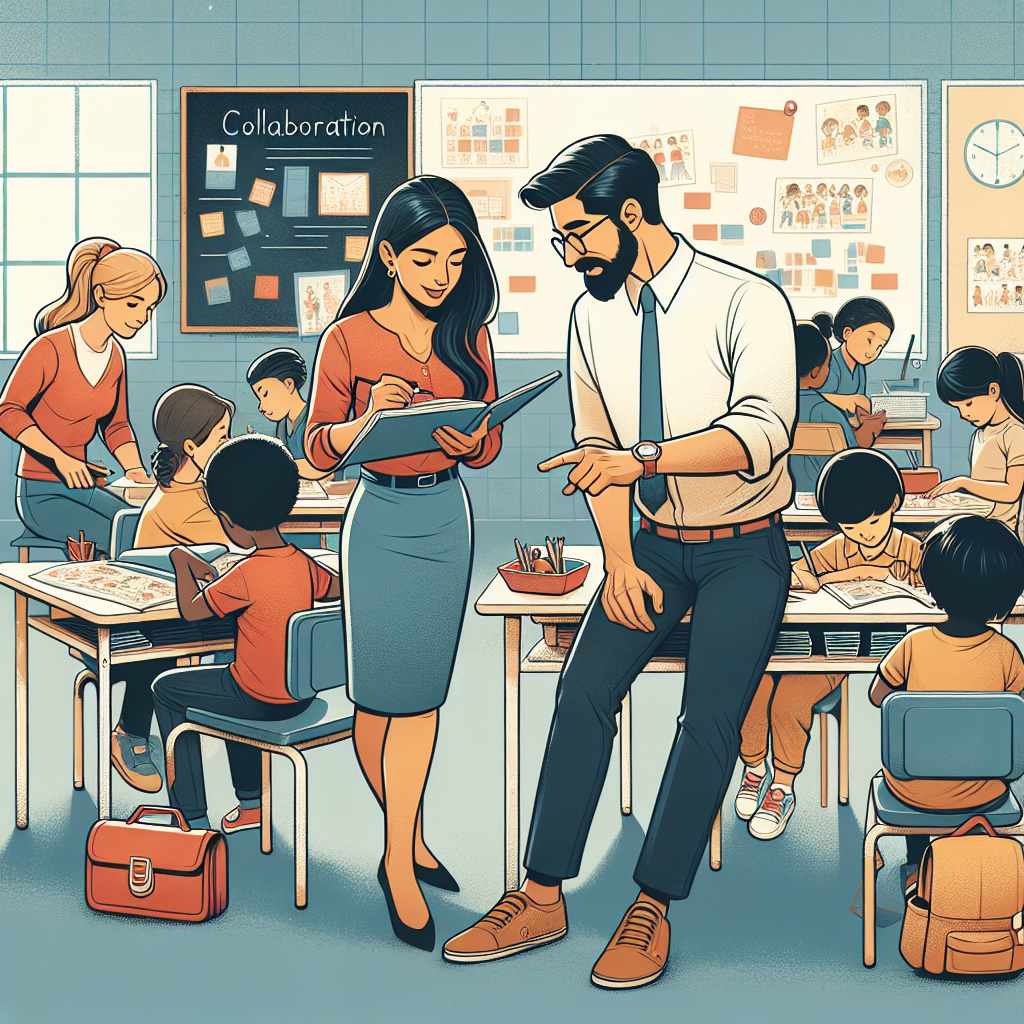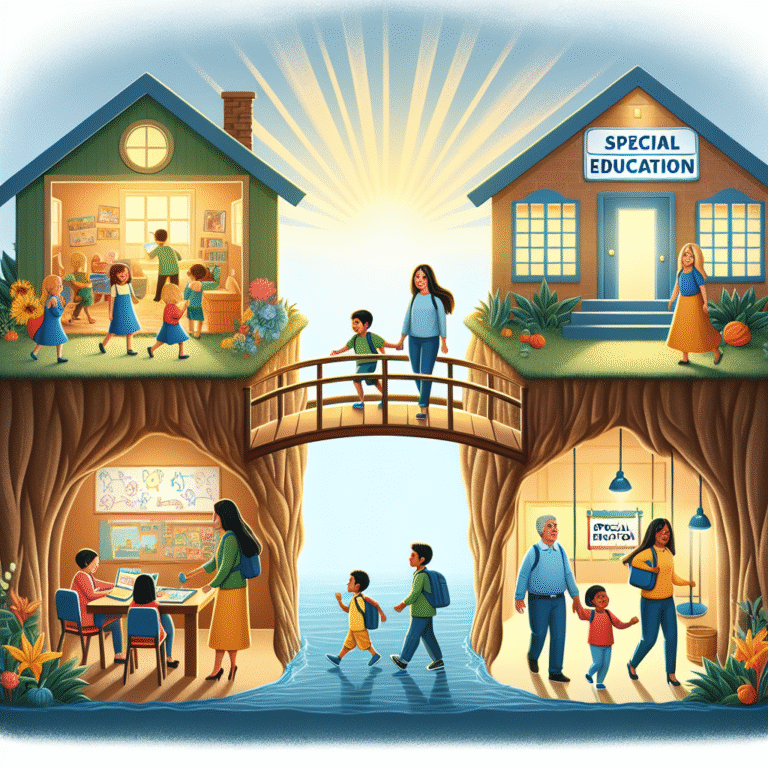
Introduction
In today’s educational landscape, the imperative for collaboration among professionals has never been more vital. Imagine a student named Alex, who struggles with both academic performance and social skills. While teachers strive to deliver effective lessons and manage classroom dynamics, therapists aim to address Alex’s emotional and developmental needs. The intersection where these two worlds meet forms the crux of what we call "Collaboration in Action: How Teachers and Therapists Work Together in School-Based Interventions." This article delves into this critical partnership, showcasing the remarkable outcomes that emerge when educators and therapists join forces to support students holistically.
The Importance of Collaborative Approaches
Understanding the Framework
Collaboration in schools is not merely an ideal but a necessity. The U.S. Department of Education emphasizes the need for integrated services in educational settings, urging professionals to break down silos for the benefit of students. By pooling their expertise, teachers and therapists create a more cohesive support system that fosters student success.
The Benefits of Collaboration: A Case Study
Consider the case of Maplewood Elementary, where teachers and educators collaborated to implement an Individualized Education Plan (IEP) for multiple students. This initiative not only improved academic outcomes but also positively impacted social interactions among students with varying needs.
| Collaborative Benefits | Measurable Outcomes |
|---|---|
| Enhanced student engagement | 30% improvement in participation |
| Reduced behavioral issues | 25% decrease in disciplinary actions |
| Improved academic performance | 20% increase in test scores |
Table 1: Collaborative Benefits and Measurable Outcomes at Maplewood Elementary
Role Clarification: Who Does What?
Teachers and Their Role
Teachers play a pivotal role in the academic and social development of students. They are on the front lines, observing student behaviors, implementing educational strategies, and creating engaging learning environments. Their classroom insights provide valuable context for interventions that therapists can develop.
Therapists: Nurturers of Emotional and Social Growth
Therapists contribute specialized skills, allowing them to address more profound emotional and behavioral challenges. They are equipped to conduct assessments that reveal specific needs and create evidence-based interventions. For example, a speech therapist might collaborate with preschool teachers to design activities that foster communicative development in children with speech delays.
Best Practices for Effective Collaboration
Regular Communication
Communication is the bedrock of effective collaboration. Weekly meetings can provide a platform for teachers and therapists to share updates, discuss student progress, and strategize together. For instance, a special education teacher may present data about a student’s performance in reading, allowing the occupational therapist to align motor skill goals with this academic area.
Joint Training and Workshops
Professional development sessions that include both teachers and therapists can equip them with shared knowledge and unfamiliar perspectives. Whether focusing on trauma-informed care or innovative teaching methods, joint training fosters a combined framework that enhances both teaching and therapeutic practices.
Example Workshop: Integrating Social-Emotional Learning into the Classroom
At an organized workshop, educators and therapists explore strategies to implement social-emotional learning (SEL) in the classroom. Attendees leave with actionable steps, such as incorporating mindfulness exercises into morning routines, which both therapists and teachers can reinforce.
Overcoming Challenges to Effective Collaboration
Time Constraints
Both teachers and therapists often face overwhelming schedules. Joint planning time can be scarce, leading to fragmented service delivery. Establishing designated “collaboration hours” in the school week can be a game-changer, ensuring all professionals involved have an opportunity to strategize.
Misunderstandings and Misalignment
Professionals may occasionally view their roles through a lens of competition rather than collaboration. Workshops designed to clarify roles and establish mutual goals can help bridge this gap. Regularly revisiting case studies of successful integration can serve as motivation, emphasizing the importance of teamwork in achieving shared objectives.
Real-World Application: A Collaborative Success Story
At Riverbend High School, an innovative program called “Team for Success” prompted educators and therapists to work side by side.
- Objective: The initiative aimed at supporting students with behavioral issues due to ADHD.
- Implementation: Weekly classroom sessions dealt with behavioral techniques reinforced by therapy skills. Teachers employed strategies from therapists, such as positive reinforcement and structured routines.
- Results: After six months, 80% of participating students showed reduced disruptions in class and improved academic performance.
Analysis of the Case Study
The “Team for Success” program serves as a compelling example of how ongoing collaboration can yield significant improvements in student behavior and academic outcomes. It underscores the need for both educators and therapists to converge their knowledge and skills.
Empowering Relationships: The Role of Families
Engaging Parents and Caregivers
Collaboration in schools extends beyond the classroom. Involving families in the process fosters a team approach. Parent workshops can provide valuable insights and equip families with strategies to reinforce the efforts made by teachers and therapists.
Case Example: Parent Engagement at Crestview School
At Crestview School, parents participated in monthly meetings to discuss strategies used by teachers and therapists. This communication led to a unified approach at home and school, greatly enhancing the effectiveness of school-based interventions.
Conclusion
Collaboration in action brings forth a new era in education, where teachers and therapists work together to create more inclusive and supportive environments for students. By prioritizing open dialogue, shared knowledge, and a united approach, educators can ensure that every child receives the unique support they need to thrive. As we move forward, let’s embrace this partnership, not just as an option but as an essential component for transforming the educational experience for all students.
FAQs
1. How can teachers and therapists start collaborating in school?
Begin with regular meetings or joint training sessions to discuss students’ needs and tailor interventions together.
2. What are the common misunderstandings between teachers and therapists?
Often, teachers feel therapists do not understand classroom dynamics, while therapists may feel teachers overlook essential emotional and behavioral aspects of students.
3. How does collaboration impact student success?
Joint efforts create a holistic support system that addresses both academic and emotional needs, resulting in better outcomes for students.
4. What can parents do to support collaboration in schools?
Engage in regular communication with both teachers and therapists, attend workshops, and participate in discussions about their child’s progress.
5. Are there any tools to facilitate collaboration?
Yes, platforms like communication apps or shared digital folders can help keep everyone informed and aligned on student progress and strategies.
As we see the landscape of education evolving, the practice of collaboration among educators and therapists is becoming increasingly essential to ensure the well-being and success of our students. So, let’s not just talk about "Collaboration in Action: How Teachers and Therapists Work Together in School-Based Interventions," but make it a living, breathing practice that shapes our educational future.


















